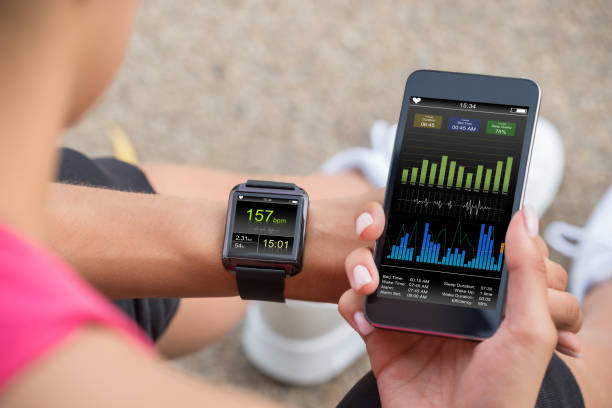Fitness Apps Transforming Smartphone Workouts
From tailored training plans to real-time tracking and social motivation, fitness apps put comprehensive workout tools on your phone. Discover how mobile apps deliver personalized routines, progress analytics, nutrition tracking, and device integrations to help you build lasting healthy habits.

Smartphones have turned into powerful fitness companions, helping millions move more, train smarter, and stay motivated. Modern fitness apps combine guided workouts, data-driven feedback, and social features so users can access expert-designed routines and monitor health metrics anywhere. By gamifying progress—through badges, leaderboards, and shareable achievements—these tools make consistent exercise easier and more enjoyable for a wide range of people.
What kinds of workouts do fitness apps offer?
The workout options in fitness apps are extremely varied, accommodating different goals, abilities, and preferences. You can find high-intensity interval training (HIIT), strength and resistance programs, yoga flows, Pilates, dance-based cardio, and low-impact mobility sessions. Running and cycling apps focus on endurance and pacing, while others target muscle gain, weight loss, or general conditioning.
Many platforms include curated multi-week plans aimed at specific milestones—running a 5K, building lean muscle, or learning bodyweight skills like pull-ups. For time-pressed users, dozens of apps specialize in short, equipment-free sessions that can be done at home or during a break at work. Whether you prefer guided video classes, audio coaching, or text-based workouts, there’s likely an app that matches your routine and schedule.
How do fitness apps measure progress and health data?
Tracking is one of the biggest strengths of fitness apps. They often tap into a phone’s sensors (accelerometer, GPS) or sync with wearables to record steps, distance, pace, heart rate, calories burned, and workout duration. This information is usually presented in dashboards with charts and trends, making it easy to see improvements over days, weeks, and months.
Beyond basic activity metrics, many apps now include sleep analysis, stress indicators, and menstrual cycle tracking to provide a more complete picture of health. Advanced fitness tools can combine GPS data for run maps, cadence and power metrics for cyclists, and recovery indicators to help plan training load. Visual progress reports and milestone summaries encourage consistency and help users fine-tune their routines.
Can an app replace a personal trainer?
Fitness apps offer affordability, convenience, and a wide selection of training styles, and some use algorithms to personalize workouts based on your input and performance. They can be excellent for learning technique through instructional videos, following structured programs, or maintaining accountability with reminders and streaks.
However, human trainers provide several irreplaceable benefits: hands-on form correction, immediate adjustments based on how you’re performing that day, and tailored motivation that adapts to your personality. For many people, the best approach is hybrid—use an app for daily workouts and data tracking, and consult a trainer periodically for technique checks, program updates, or more complex needs like rehabilitation or advanced athletic coaching.
How do fitness apps connect with other health tools?
Most fitness apps are designed to play well with other parts of your wellness ecosystem. They can sync with nutrition trackers to combine calorie intake and expenditure, link to smart scales to log body composition changes, and connect with blood pressure monitors or glucose meters for more medical-grade readings. These integrations let users view nutrition, activity, sleep, and biometric data in one place, supporting more informed decisions about training and lifestyle.
Third-party connectivity also extends to health platforms and wearables, so data from smartwatches, chest straps, and home devices can feed into your app’s analytics. This consolidated approach helps people identify patterns—like how sleep affects performance—or track long-term health trends alongside training progress.
Popular fitness apps and what they offer
| App Name | Key Features | Cost Estimate |
|---|---|---|
| MyFitnessPal | Calorie tracking, extensive food database, workout logging | Free; Premium available ($19.99/month) |
| Strava | GPS-based tracking for running/cycling, social leaderboards | Free; Summit plans ($7.99/month) |
| Nike Training Club | Wide exercise library, personalized plans, no cost | Free |
| Fitbody | Meal plans, guided workout videos, progress tracking | Subscription model (around $19.99/month) |
| Peloton App | Live and on-demand classes, performance metrics | App subscription (approx. $12.99/month) |
Prices and subscriptions are subject to change; verify independently before making financial decisions.
Looking ahead: the evolving role of fitness apps
As machine learning and wearable sensors improve, fitness apps will deliver ever-more personalized recommendations—optimizing training load, recovery, and nutrition advice based on real-time data. Expect smarter adaptive programs, richer social features for accountability, and tighter integration with medical devices for users with chronic conditions.
For most users, fitness apps are powerful tools that lower barriers to exercise, provide structured guidance, and make progress visible. When combined with occasional expert input or supervised feedback, they can form the backbone of a sustainable and effective fitness routine.
This article is for informational purposes only and should not be considered medical advice. Please consult a qualified healthcare professional for personalized guidance and treatment.






